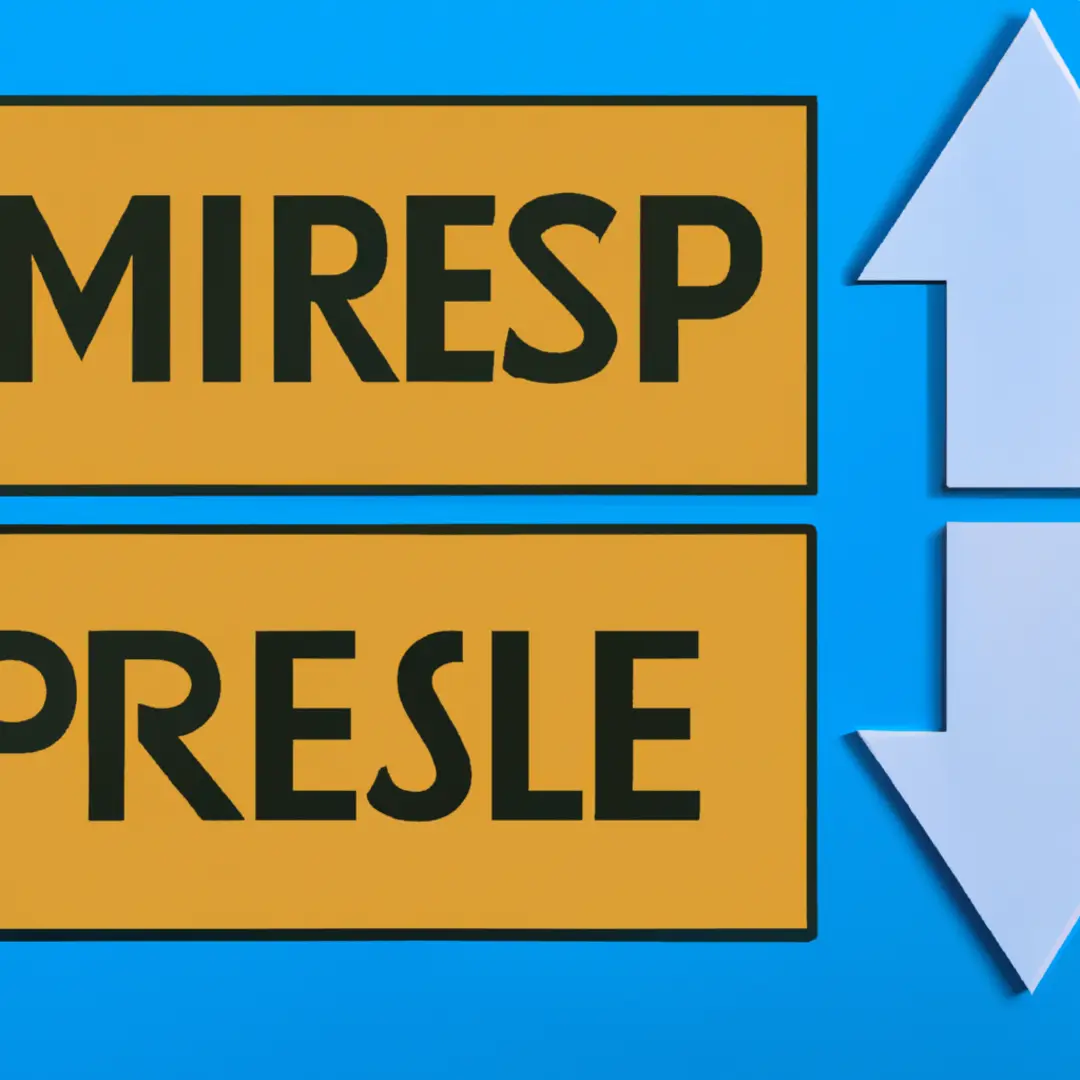Table of contents
- Introduction to Revenue Models
- Unraveling the Concept of Transactional Revenue Model
- Elucidating the Concept of Recurring Revenue Model
- Drawing Comparisons Between Recurring and Transactional Revenue Models
- Industry Insights on Revenue Models
- The Ascendancy of Subscription-Based Models
- Crucial Metrics to Evaluate Success in Each Model
- Handling Revenue Recognition and Compliance
- Case Studies and Practical Implementations
- Staying Nimble in the Face of Market Shifts
- Conclusion
Introduction to Revenue Models

An Overview of Revenue Generation Bases
In the bustling landscape of the business world, the cornerstone of any company’s financial triumph lies within its choice of revenue model. The selection of the right revenue model is the backbone of enduring growth and prosperity. In the mix of revenue models, transactional and recurring models hold notable significance due to their unique traits and ramifications.
The Crucial Decision of Selecting the Right Revenue Model
The design of a sound revenue model sets the foundation stone for a prosperous business alliance. Not only it is the lifeline of the income stream but plays a significant part in customer relations, the management of cash flow, and the overall potential for flourishing. Thus, comprehending the dissimilarities and making a well-informed selection is crucial for business magnates and leaders.
Unraveling the Concept of Transactional Revenue Model

Key Traits of Transactional Revenue Models
The focus of a transactional revenue model is based around individual sales or singleton transactions. It emphasizes creating instant income from customers who procure products or services on a per-transaction structure. This type of model is frequently used in conventional retail, e-commerce, and service-oriented sectors.
Instances of Businesses Implementing Transactional Revenue Models
Online retail giants like Amazon, where customers remunerate for each item procured, and service providers that charge a set fee for their rendered services, are prime examples of businesses that utilize the transactional revenue model.
Merits and Demerits of Transactional Revenue
Advantages:
- Instantaneous Revenue: Each deal directly contributes to immediate revenue.
- Adaptability: Enterprises can swiftly modify pricing strategies or product offerings based on consumer demand.
- Absence of Long-Term Commitment: Customers are devoid of long-term obligations, providing freedom of choice.
Drawbacks:
- Unstable Cash Flow: Revenue that fluctuates based on sales quantity makes cash flow management a challenging task.
- Decline in Customer Fidelity: The transactional nature of the model may limit opportunities for repeat business and diminish customer loyalty.
- Limited income forecasting: The unpredictable nature of sales make forecasting long-term revenue more difficult.
Elucidating the Concept of Recurring Revenue Model

The Principle of Recurring Revenue Streams
Recurring revenue models are centered on lasting customer relationships and are aimed at spawning regular, sustainable income over time. It is based on subscription plans, memberships, or contracts that continually provide value to customers, fostering customer loyalty.
A Brief on Recurring Revenue Models
Recurring revenue models are available in an array of types:
- Subscription-based Models: A model where customers pay a recurring fee to get perpetual access to products or services.
- Membership Models: In this model, customers become members of a community or organization and pay a recurring fee for perks, exclusive content, or access to events.
- Usage-based Models: Customers get charged according to their utilization or consumption of a product or service, such as pay-as-you-go cloud computing services.
Pros and Cons of Recurring Revenue
Benefits:
- Steady and Reliable Revenue: Recurring revenue models offer better predictability and stability, permitting businesses to strategize for the long haul.
- Elevated Customer Lifetime Value (CLTV): Building lasting relationships with customers results in higher CLTV, maximizing the return on investment.
- Enhanced Customer Loyalty: Customers are likely to stick around with businesses that offer value over extended periods.
Drawbacks:
- Increased Initial Investment: The implementation of a recurring revenue model often necessitates an investment in infrastructure or regular maintenance.
- Potential Customer Churn: Customers might cancel their subscriptions or contracts if they fail to perceive value in the offering.
- Market Saturation: Overly competitive markets might result in limited growth potential and exert downward pressure on prices due to numerous subscription options.
Drawing Comparisons Between Recurring and Transactional Revenue Models

Financial Steadiness and Predictability
Recurring revenue models extend greater financial steadiness and predictability when juxtaposed with transactional models. The recurring income from subscribers or members allows strategic planning and allotment of resources, minimizing the risk associated with fluctuating sales volumes.
Cash Flow Management
Transactional models often battle with irregular cash flow patterns due to inconsistent sales, making the management of cash flow quite a challenge. In contrast, recurring revenue models provide better cash flow projections and facilitate efficient budgeting by providing a reliable income stream.
Customer Relationship Maintenance
The customer interaction period in transactional models is usually brief, creating a limit on the opportunity to construct and nurture long-term relationships. On the other hand, recurring revenue models allow continuous customer engagement, fostering loyalty and providing increased opportunities for upselling and cross-selling.
The Potential for Long-Term Business Growth
Recurring revenue models generally offer superior long-term growth potential, especially in industries where subscription-based services are favored. By continually delivering value, businesses can create a stable customer base and focus on expanding their offerings to accommodate developing market needs.
Pricing Strategies and Customer Lifetime Value
Transactional models largely rely on one-off purchases, making the formulation of pricing strategies and maximizing customer lifetime value a complicated task. Conversely, recurring revenue models are compatible with pricing tiers and can implement strategies to boost customer loyalty, which in turn maximizes revenue over a lengthier period.
Industry Insights on Revenue Models

Recurring vs. Transactional Models in the Tech Sphere
In the tech industry, a significant number of companies have successfully adopted the recurring revenue model, with software-as-a-service (SaaS) providers being prime examples. This shift enables them to offer regular updates, support, and maintenance, resulting in continuous revenue while fostering customer relationships.
Revenue Models in Retail and E-commerce
Retail and e-commerce businesses usually adhere to transactional revenue models, where customers pay for products on a per-item basis. Yet, the integration of subscription programs and customer loyalty initiatives has allowed businesses to incorporate elements of recurring revenue, thereby boosting customer engagement and driving sustainable revenue.
The Influence of Revenue Models in the Service Sector
The service sector is heavily dependent on recurring revenue models, particularly in fields like consulting, software licensing, and maintenance services. Service providers can leverage long-term contracts or subscription agreements to ensure smooth revenue streams while providing continual support and expertise to their clientele.
The Ascendancy of Subscription-Based Models

The Era of the Subscription Economy
In recent years, the subscription economy has witnessed substantial growth across a variety of industries. Businesses are understanding the numerous benefits of subscription-based models such as increased customer loyalty, consistent revenue, and a competitive edge.
Customer Behaviour and Preferences
The changing habits of consumers, particularly the shift towards digital experiences and convenience, has contributed to the rise of subscription-based models. Customers are increasingly valuing the continuous access, customization, and cost-saving benefits offered by subscriptions.
The Hurdles in Transitioning to a Recurring Revenue Model
While recurring revenue models offer innumerable advantages, transition from a transactional model can present challenges and warrant careful planning. Businesses need to study customer needs, pricing configurations, and potential impacts on cash flow and staffing structures to ensure a smooth transition.
Crucial Metrics to Evaluate Success in Each Model

Key Indicators for Transactional Revenue Models
For transactional models, key performance indicators (KPIs) often comprise sales volume, customer acquisition cost (CAC), average order value (AOV), conversion rate, and customer satisfaction score (CSS).
Paramount KPIs for Recurring Revenue Models
In recurring revenue models, KPIs are centered around customer retention rate, monthly recurring revenue (MRR), churn rate, customer lifetime value (CLTV), and subscription growth rate.
Analyzing Performance Metrics
A comparative analysis of performance metrics between recurring and transactional models allows companies to gauge the financial health, customer satisfaction, and growth potential inherent in both revenue models.
Handling Revenue Recognition and Compliance

Accounting for Transactional Revenue
Transactional revenue accounting is relatively straightforward, with revenue recognized upon the completion of a sale. Regulation adherence centers on complying with standard accounting regulations and ensuring transparent and accurate financial reporting.
Accounting Challenges in Recurring Revenue Models
Recurring revenue models often usher in accounting complexities related to recognizing revenue over time and managing deferred revenue. Compliance necessitates adherence to revenue recognition principles, such as ASC 606 (IFRS 15) for subscription-based services and contracts.
Impact of Revenue Recognition Standards
Changes in revenue recognition standards, such as ASC 606 and IFRS 15, aim to create uniformity across industries in terms of recognizing revenue. These standards have a significant impact on revenue recognition practices, especially in recurring revenue models, and require companies to adjust their accounting processes accordingly to remain compliant.
Case Studies and Practical Implementations

Transactional Revenue Models That Flourished
Companies like Nike and Apple have built successful businesses by focusing on transactional revenue models. Through constant innovation, robust branding, and a keen understanding of market demand, they have been able to cater to individual customer preferences successfully.
Successful Recurring Revenue Models
Recurring revenue models have too seen their fair share of success. Companies like Netflix and Spotify have revolutionized the entertainment industry by providing subscription-based services, thereby benefiting from continual revenue streams and customer loyalty.
Key Lessons Learned: Avoiding Pitfalls in Each Model
Regardless of the chosen revenue model, it’s essential to understand potential pitfalls. Common mistakes for businesses to avoid include disregarding customer relationships in transactional models and not considering excessive customer churn or rigid pricing structures in recurring models. Learning from these experiences can help entrepreneurs make better-informed decisions.
Staying Nimble in the Face of Market Shifts

Understanding When to Swap Your Revenue Model
Shifts in market dynamics, evolving customer preferences, or disruptive innovation may necessitate a change in revenue model. Businesses must consider transitioning when their current model loses effectiveness in generating revenue or fails to meet customer expectations.
Approaches for Transitioning Between Models
The shift between revenue models requires careful forethought, which includes evaluating customer requirements, pricing strategies, and potential operational adjustments. Steady implementation, market testing, and effective communication are essential for ensuring a successful transition.
Maintaining Agility in a Changing Economic Landscape
Flexibility remains a critical factor in navigating the dynamic and ever-changing business environment. Businesses must be adaptable, keep a close watch on market trends, and be open to adjusting their revenue models or strategies to stay ahead of competitors and satisfy changing consumer demands.
Conclusion

Drawing Key Insights
The selection between recurring and transactional revenue models significantly influences a business’s financial stability, potential for growth, and strength of customer relationships. While recurring models offer predictable revenue streams, increased customer value over time and the capacity to cultivate long-term loyalty, transactional models offer flexibility and immediate revenue but may lack long-term sustainability.
Pondering Upon the Future of Revenue Models
Considering today’s rapidly evolving business landscape, revenue models will also continue to transform. The rise of the subscription economy, shifting consumer behavior, and advancing technology will influence businesses to consider adopting recurring revenue models to meet customer preferences and ensure sustainable growth.
Final Nuggets of Wisdom for Entrepreneurs and Business Leaders
Entrepreneurs and business leaders must critically evaluate their business models, the dynamics of the marketplace, and customer needs to select the most suited revenue model. Understanding the advantages and disadvantages of recurring and transactional models can help these individuals make sound decisions that are in line with their strategic goals, thereby increasing the chances of long-term success.




